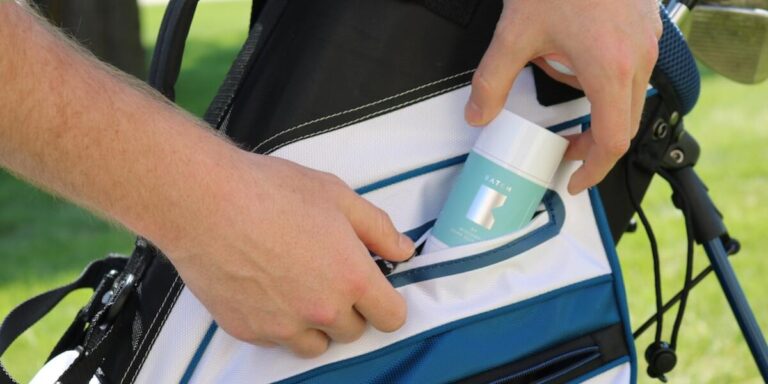What is the difference between a 10.5 and 12 driver?
When it comes to golf clubs, the driver is perhaps the most important club in a golfer’s bag. And while there are many different factors that can impact a drive – from the type of terrain to the weather conditions – one of the most important variables is the club itself. Drivers come in all sorts of sizes and styles, but two of the most common questions we get here at Golf HQ are: “What is the difference between a 10.5 and 12 driver?” and “Which one should I use?”
To answer these questions, we need to first understand how drivers are sized. In general, drivers are measured by their loft, which is essentially the angle between the face of the club and the ground when striking a ball. The higher the loft,the more forgiving (or easier to hit)the club will be. Conversely, lower-lofted drivers require more precise aim but can generate greater distance. Most beginner golfers will want to start with a high-lofted driver – somewhere between 10.5 and 12 degrees – as they’re much easier to hit than their lower-lofted counterparts.
As you become more familiar with your swing and develop your skills on the course, you may find that you prefer a lower-lofted driver for added distance off tee. But ultimately, it’s up to each individual golfer to experiment with different types of drivers until they find what works best for them.
Drivers Explained: The Difference between a 5 and 12 Driver
A driver is the longest and heaviest club in a golfer’s bag, and is used to hit the ball the farthest. The two main types of drivers are the 5-driver and the 12-driver.
The difference between a 5 and 12 driver is loft. A 5-driver has less loft than a 12-driver, meaning it will hit the ball lower and with more spin. A 12-driver has more loft, meaning it will hit the ball higher with less spin. Drivers also vary in terms of length, weight, and flex.
It’s important to experiment with different drivers to find which one works best for your game. Ultimately, it comes down to personal preference as to which type of driver you prefer.
How to Choose the Right Golf Club Driver for Your Swing
Assuming you would like a blog titled “How to Choose the Right Golf Club Driver for Your Swing”:
Choosing the right golf club driver can be difficult, especially if you’re not sure what swing type you have. If you have a slow swing speed, then you’ll want to choose a driver with more loft. This will help get the ball up in the air so it doesn’t go too far. If you have a fast swing speed, then you’ll want to choose a driver with less loft. This will help keep the ball from going too high and hitting into the trees. You also need to consider the size of the head on the driver. A larger head will give you more forgiveness if you hit it off-center, but it may be harder to control. A smaller head will be easier to control but won’t forgive as much if you hit it off-center.
Perfecting Your Drive: Tips for Choosing Between a 5 and 12 Driver
When it comes to golf clubs, drivers are one of the most important pieces of equipment. They can make or break your game, and so it’s important to choose wisely when selecting one. But with all the different options on the market, how do you know which is right for you? Here are some tips to help you choose between a 5 and 12 driver:
The first thing to consider is what sort of terrain you’ll be playing on. If you’re mostly going to be playing on flat courses with few obstacles, then a lower numbered driver will likely suffice. However, if you often find yourself playing on hilly or wooded courses, then a higher numbered driver will give you the extra distance and accuracy you need to navigate those challenges.
Another factor to keep in mind is your own strength and abilities. If you’re a beginner or have a slower swing speed, then again, a lower numbered driver will be fine. But if you’re an experienced player with a strong swing, then go for a higher number—it will give you more power and control over your shots.
Finally, think about your budget. Drivers can range in price from very affordable to quite expensive, so it really depends on how much money you’re willing (or able) to spend. With that said, don’t feel like you need to break the bank in order to get a good quality driver— there are plenty of great options available at more moderate prices . Ultimately ,the best way to figure out which driver is right for YOU is by doing some research and then taking them out for test drives (literally!) at your local driving range or golf course . By trying out different
When to Use a 5 or 12 Driver in Your Golf Game
If you’re new to golf, you might be wondering when to use a 5 or 12 driver in your game. Here’s a quick rundown of the differences between the two:
The 5 driver is designed for more control and accuracy, while the 12 driver is meant for distance. If you’re just starting out, it’s probably best to stick with the 5 driver until you get a feel for how far you can hit the ball.
Once you’ve got some experience under your belt, though, using a 12 driver can help you add some extra yards to your drives. Just be aware that since it’s designed for distance rather than accuracy, you’ll need to be extra careful with your swing if you want to avoid slicing or hooking your shot.
Getting the Most Out of Your Golf Clubs: Choosing the Correct Driver loft
Having the correct driver loft is key to getting the most out of your golf clubs. A driver with too little loft will result in the ball going too low, while a driver with too much loft will go too high. It’s important to find the sweet spot in order to get maximum distance and accuracy. The best way to do this is to consult with a club fitter or take a few practice swings with different drivers before making a purchase. By taking the time to choose the correct driver loft, you’ll be sure to improve your game and enjoy yourself on the course more than ever before!
What Do the Numbers Mean? DecodingDriver Lie Angles
When it comes to decoding driver lie angles, the numbers don’t mean much unless you know how to interpret them. The average golf club is designed with a lie angle between 61 and 63 degrees, which is relative to the ground when the club is sitting in position for a normal swing. Most drivers have slightly more loft than this range, somewhere between 10 and 12 degrees, which helps get the ball airborne. But what do those extra few degrees mean in terms of your shot?
When your driver has too much loft, it can cause your shots to balloon up into the sky and lose distance. If you find that your drives are veering off to the right, it could be due to a driver with too little loft; likewise, if they’re curving left, too much loft could be the culprit. So how can you tell if your driver’s lie angle needs adjustment?
The best way to determine whether or not your driver’s lie angle needs adjusting is by taking some practice swings with it and observing where the ball goes. If you find that most of your drives are going straight but every once in awhile one will curve off to either side, then chances are good that yourdriver’s lie angle is just fine as-is. However, if you find that all of your drives are consistently veering off in one direction or another—or if you hit some truly wild slices or hooks—then it might be time for a trip to the golf proshop so they can tweak things until they’re just right.
Frequently Asked Question
-
What is the difference between a 10.5 and 12 driver?
-
What loft should my driver be?
-
What is the easiest driver to hit for seniors?
-
Is a bigger driver head better?
-
Are shorter driver easier to hit?
-
How long should a golf driver be for my height?
-
Do any pros use a 10.5 degree driver?
-
How do I choose a driver for a club?
-
What is considered a mid handicap golfer?
-
How often should I buy a new driver?
-
What is a good driver for an average golfer?
-
Is 9.5 or 10.5 driver better?
-
What flex driver do I need?
-
What degree driver does Tiger Woods use?
-
Is 9.5 or 10.5 driver better?
Most golfers use 10.5 degrees as their average loft. These drivers are good for most players. If you don’t have any issues with your game then 10.5 might be the right choice. 12 degree loft drivers produce less spin and height, but with faster swing speeds.
Your swing speed and attack angle will determine the ideal loft for you. A 10.5-degree driver is the most effective for average players who swing the club at less than 95 MPH. A 9-degree driver is more recommended for players with better control and who want to drive farther.
The Callaway Rogue ST MAX is the perfect choice for seniors who want to enjoy a classic, modern game-improvement driving experience. It has amazing forgiveness with incredible distance and solid feel.
Pure performance is a function of the clubhead’s size. The larger the head, the greater its Moment of Inertia. This means that the bigger the head is, the more it can hit off-center. The face area of the head should be larger than the body.
It is much easier to hit a shorter driver. A shorter driver, as we have discussed before will reduce the width of your swing and allow you to hit the centre of the clubface more often.
If there is a 6 inch difference in height, then their 5 irons should differ by 1″. Consider 36.5″ as the recommended length for the woman and 38 for the men (or 36.75″, / 38.25″)
Dustin Johnson won the WGC/HSBC Champions title with a TaylorMade SLDR driver. It has 10.5 degrees loft. TaylorMade recently promoted the “lofting up” benefits with their new driver but it has been a regular trend on the PGA Tour since more than a decade.
There are seven main factors to take into consideration when looking for a driver: ability, skill level, club face size, clubface color, loft flexibility, adjustability, and shaft flexibility.
Mid handicappers are golfers with average handicap scores. The handicap ranges from 11 to 20 for mid handicappers. This category of golfers would shoot between 80 and 94.
Most golfers will replace their driver at least every five years. The age of golf drivers is not as severe as it was 15 years ago. It doesn’t matter how well you take care of your golf driver, it will last many seasons. This is true even for those who play often.
For the best results, I recommend using a driver with a loft of 13 to 14 degrees. You’ll be able to launch your ball higher into the air with more loft. It will also put less spin on the ball and give you greater distance. A driver that is slightly less lofted should be used by someone with an 80-95 MPH swing speed.
A 10.5 driver generally is considered to be more efficient than a 9-footer. Because the 10.5 driver is more flexible and allows you to hit the ball further into the air, this holds true. The driver has the shortest shaft, but with the most loft (except for a putter). They are therefore difficult for most golfers to hit.
A stiff flex is necessary if you are traveling between 97 and104 mph while driving. We are now in the area where most recreational golfers and many LPGA professionals fall. Regular is best for those who are between 84-96 mph.
RELATED: Tiger Woods aims to walk the talk at Masters. When Woods arrived at the 2021 PNC Championship in Orlando, there was a brand new TaylorMade Stealth Plus 9 degree driver and his familiar Mitsubishi Diamana D+ Limited 40TX driver.
Your swing speed and attack angle will determine the ideal loft for you. A 10.5-degree driver is the most effective for average players who swing the club at less than 95 MPH. A 9-degree driver is more recommended for players with better control and who want to drive farther.
Conclusion
When it comes to golf clubs, the driver is one of the most important pieces of equipment. The driver is designed to hit the ball a long distance, and it comes in different sizes depending on how much power you want to generate. A 10.5 driver is typically used by beginner golfers because it gives them more control over their shots. A 12 driver is usually used by more experienced golfers who are looking for more distance.







